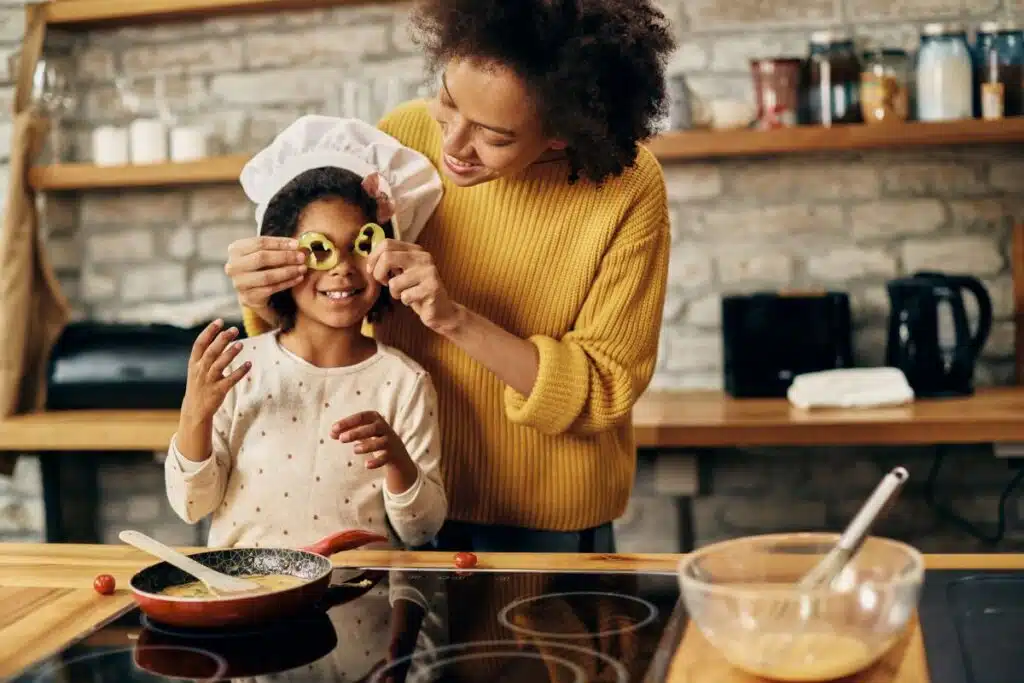5 Essential Tips for Promoting a Positive Food Relationship in Children
By Rebecca Jaspan, MPH, RD, CDN, CDCES
We are all born intuitive eaters. Babies cry when they are hungry and tell you when they are full by unlatching from the breast or bottle, moving their head away from their spoon, or going to play. As we get older, many of us lose our abilities to eat intuitively. This may be due to overriding hunger and fullness cues, hearing adults speak about food in negative ways, and exposure to confusing messages about what we should or shouldn’t eat. We also live in a society that values thinness and equates a small body with a healthy one. It is no wonder that so many adults develop disordered eating behaviors and a negative relationship with food.
The good news is there are many ways you can help your kids have a positive relationship with food. As parents, you have a lot of influence over the way your kids view food and their bodies and you can help them make food one part of their life that is associated with joy, rather than a source of preoccupation and obsession. Here are five tips to help your child develop a positive relationship with food and a lifetime of stress-free eating.
-
Start young
Since your child is born an intuitive eater, you can capitalize on that from the start and help them maintain those innate cues as they get older. You can help them maintain their natural hunger and fullness cues and trust in their bodies by using a responsive feeding approach. When your baby starts solid foods, you can let them feed themselves with a method called baby led weaning. You can also take a responsive approach if you are feeding purees with a spoon. Watch your baby’s cues for when they are showing signs of being full and satisfied. They may start moving their mouth away from the spoon, flail back in their seat, or become fussy. Honor these cues rather than forcing them to eat more if they are no longer interested. Here is another resource with tips for giving your child more autonomy at the dinner table.
-
Use neutral language about food
The language children hear you use around food is extremely influential. We want kids to know that all foods have a place in our diets and we can eat all foods in moderation. Notice if you are labeling any foods as “good” or “bad”. It is important for children to understand that we are not “good” for eating vegetables or “bad” for eating cookies. Labeling foods can cause feeling guilty for eating less nutritious foods and could even lead to hiding food or overeating certain foods that are viewed as “bad” when they are offered. Instead, try to focus on what the foods do for our bodies and mind. For example, try statements like “eating yogurt gives us strong bones” or “baking cupcakes together is so much fun!”.
-
Use non-food rewards
If you are begging your kids to eat more vegetables or needing a consequence for bad behavior, it may be tempting to reward with or takeaway treats. Food used as rewards or withheld as punishments teaches children to attach certain emotions to food, rather than viewing the food neutrally. It also sends the message that some foods are more desirable than others and they can expect certain types of foods when they do something well. Try rewarding kids with stickers, toys, doing a fun activity with you, or playdates with friends.
-
Set a positive example
Kids are very observant and they model your words and behaviors. They will likely pick up on the way you speak about your own food and body and other people’s bodies. Try to avoid speaking negatively about your own body and other people’s bodies. Celebrate what bodies can do by teaching what certain organs do to keep us alive or pointing out strength or flexibility, taking the focus off of body shape and weight. Here are some additional tips for focusing on other measures of health beyond weight.
-
Eat meals together
Just like kids pick up on the way we speak about bodies, they will also observe behaviors around food. And what better time to set a positive example around food than family meal time. If they see you are relaxed around food, they will be too. Keep meal time conversation light and fun and let children enjoy all foods equally, from vegetables to dessert.







